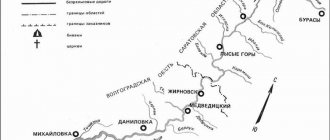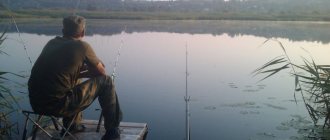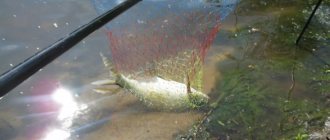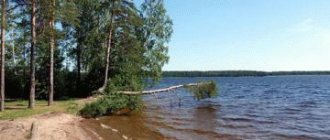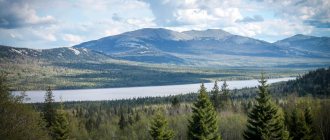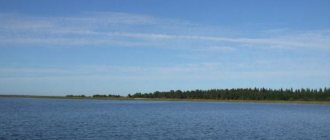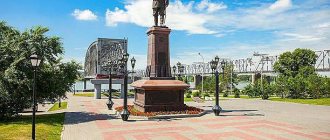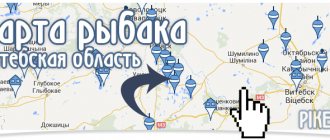The airport in Volgograd Gumrak is a newfangled airport of international class. How to get there?
The airport in Volgograd Gumrak is a newfangled airport of international class.
10 kilometers away is the village of Gumrak, after which it was named at one time. Volgograd airport has been operating since 1933. The status of interethnic was assigned in 1998 after the completion of the reconstruction and major overhaul of the station. Volgograd Airport is a subject of the Russian Federation. Gumrak interacts with many foreign airlines.
Bandwidth:
- within the country - up to 500 passengers per hour;
- international passenger transportation - up to 300 people per hour.
Before the overhaul, the indicators were much lower and corresponded - 200 and 100.
Prices and tourist infrastructure
The cost of living in equipped sanatoriums in the Elton resort area will be from 1,700 rubles per day per person .
Rented housing in the private sector within a 7-kilometer strip from the lake can be found even at a lower price. This does not require the help of aggregator sites at all. Everything can be done upon arrival in the village. Local residents will be happy to show hospitality by offering an apartment or even a whole house for accommodation with a bicycle in addition - with it it is cheaper and more convenient to get to the healing brine. The tourism infrastructure on Elton, as well as throughout the Volgograd region, has received a boost and is now developing every season. There are cozy hotel rooms, catering outlets of varying prices, equipped sports grounds, modern shops, beach equipment rental points, and a developed network of main and secondary roads for transport crossings. So it’s easy to get to your destination both from Volgograd and points in the region, as well as from Kamyshin, Saratov and Astrakhan by your own car or by minivan taxi. Travel time is about 6 hours.
In addition, railway tracks and sidings . Traveling by train will be an interesting prelude to an excursion to the magical healing waters.
This is such a gorgeous point on the map of Russia! Soon the rest of the world will appreciate it.
Lake Elton
How does Volgograd airport work?
In 2021, the reconstruction of the Volgograd station was completed and now passengers are served in a comfortable and extensive complex.
Now arrivals are greeted by modern designed terminals, the walls of which are painted in light colors. The buildings have huge windows and spotlights.
The perimeter of the airport terminal is fenced and a security system is provided. The inspection areas are equipped with modern equipment that scans thoroughly. The aircraft parking area can accommodate 16 aircraft. Due to this, the airport is able to receive aircraft under difficult conditions.
Contacts:
- Airport address: Volgograd, Aviatorov Highway, 161A. The city center is 18 kilometers away.
- Information service:
To obtain information about transportation, phone numbers are: +7 or.
By calling you can find out:
- flight status;
*current schedule;
- registration methods and which one is better to choose;
- procedure and rules for baggage transportation;
- How does customs inspection take place on international airlines?
- how to book or buy a ticket;
- baggage claim rules;
- availability of car parking;
- conditions for transporting pets.
Passengers arriving in Volgograd receive from the station employees the schedule of buses, electric trains and telephone numbers for calling a taxi.
- Ticket offices
You can buy a ticket at the station at any time: the ticket offices are open constantly.
You can also purchase an air ticket remotely on the website of the airport or carrier company.
- Website
Volgograd Airport website - https://aeroportvolgograd.rf/.
The website contains all the necessary information regarding passenger services:
- how to get there;
- parking availability:
- air tariff, prices, cargo capacity;
- interconnected service structures;
- how to use the comfortable waiting room;
- living conditions in a hotel located on the station square;
- baggage and pet rules;
- a list of items that cannot be transported on board the aircraft;
- work of a medical and preventive institution;
- registration and inspection.
The healing power of salt waters and relaxation by the lake
Rebuilt modern buildings and rooms for spa treatments gradually replaced the spontaneous mud pits set up by savage tourists. Lake salts have become the “carrot” that today attracts many people suffering from various ailments , including:
- diseases of the musculoskeletal system,
- diseases of the genitourinary system,
- disorders of nervous origin,
- skin diseases,
- endocrine abnormalities.
In addition, therapeutic baths can strengthen the human immune system, improve metabolism, rejuvenate the body and simply create a good mood.
The territory also has its own mineral spring , located 3 kilometers from the healing mud. Its popularity among vacationers is very high. Still would! After all, the chemical composition of its water is similar to the famous healing brand “Essentuki-17”.
Holidays on Lake Elton in the Volgograd region will bring pleasure to even the most skeptical people. After all, this is the place where the healing power comes together with the recreational component of the area. Numerous parks, picturesque rivers, pink and white salt marshes, shallow lake waters, mysterious haze - this is not a complete list of the natural beauties of this region.
Infrastructure of the Gumrak port complex
- The airport in Volgograd consists of 3 terminals:
- interior;
- international;
- cargo flights.
On the station square there is a hotel and a permanent parking lot.
- Public catering.
There is a lobby bar on the ground floor of the domestic flight terminal. Prices are affordable.
There is a lunchtime cafe on the second floor where you can have a sandwich, salad, drink or coffee.
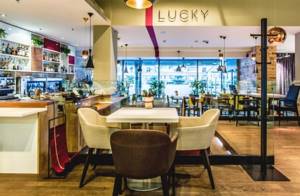
In the clean and neutral zone of the international terminal there is a cafe-bar where the visitor is offered complex meals.
- The shops.
In both terminals, shops sell locally produced products and delicacies from Astrakhan. Here you can buy: the famous Volgograd mustard oil, Astrakhan fish and caviar. Confectionery shops abound with all kinds of goodies.
There are many souvenir stalls and kiosks with printed materials on the territory of both terminals.
- Health center
Located on the first floor of the international terminal. Here passengers can receive medical assistance, consultation, have their blood pressure taken, as well as a certificate allowing them to move into the mother and child room.
- Services for disabled people.
People with disabilities are transported on board the aircraft free of charge. At the place of arrival it will also be delivered to the station free of charge.
- ATMs.
ATMs of many banks can be used at the Domestic Transport Terminal.
Sberbank ATMs are installed in the international terminal.
- Luggage storage.
Serves passengers in the domestic flights building 24 hours a day. Located on the first floor. The cost of the first day of storage is 300 rubles, the subsequent days are 50 rubles. You can store items for up to 90 days. If you lose your token, you will have to pay a fine.
- Luggage packing.
Luggage packing services at the airport are provided by AERO PACK GROUP. The baggage packing counter is located on the 1st floor in both terminals. Works around the clock. The cost of packing one place is 600 rubles. WWII veterans' luggage is packed free of charge.
- Waiting room.
The business lounge for domestic flights provides:
- priority boarding;
- simplified registration;
- buffet and drinks.
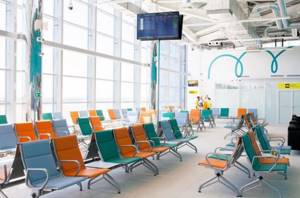
Similar services are provided to guests of the business lounge in the international terminal.
VIP lounges operate around the clock on the territory of the port complex. Passengers are provided with:
- food;
- simplified registration;
- They are delivered to the plane using special transport.
- Service for travelers with children
For passengers with children under 7 years old, a mother and child room is provided.
To check in there with a child, you must present an air ticket. A child is accommodated in a room with only one parent or guardian. The room can also be used by pregnant women who are 20 weeks pregnant. The room is provided free of charge.
- There is free Wi-Fi, for which you do not need to enter a password, and a board with information about the location of the aircraft.
Volgograd Regional Duma
Geographical location of the Volgograd region
The Volgograd region is located in the southeast of the East European Plain. The territory of the Volgograd region is divided by the Volga into 2 parts: the elevated right bank and the low left bank (Trans-Volga region). In the southern part of the right bank there is the Volga Upland (height up to 358 m), in the northern part there is the Ergeni Upland and the southeastern part of the Don ridge, as well as the Khopyorsko-Buzuluk and Sarpinskaya lowlands.
Minerals
The Volgograd region is rich in deposits of oil, natural gas, and mineral salts.
Rivers and lakes

The main rivers of the Volgograd region are the Volga and Don with their tributaries. On the territory of the region there are the Volgograd and Tsimlyanskoye reservoirs, which are the main fishing reservoirs of the region, salt lakes Elton, Botkol, Gorko-Solenoye, as well as numerous estuaries.
Climate
The climate of the Volgograd region is continental, with cold, little snow winters and hot, dry summers. The average temperature in January is from -8C to -12C, in July - from +22C to +24C. The amount of precipitation is about 350 mm per year.
Soils
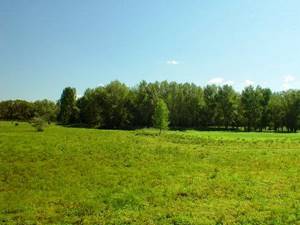
The Volgograd region is located in steppe and partially semi-desert zones. The soils are predominantly chernozem, dark chestnut, chestnut and light chestnut. Forb-grass steppes (mostly plowed) are replaced in the southeast by wormwood-grass semi-deserts. The Volgograd region belongs to sparsely forested regions. Mixed forests are distributed mainly along river valleys and occupy 4 percent of the region's territory.
Animal world
The fauna of the Volgograd region is represented by inhabitants of steppes, semi-deserts and forests. Rodents, brown hare, fox, wolf, and saiga live everywhere. There are many birds: bustards, little bustards, larks, harriers, etc.; reptiles: lizards, steppe vipers, etc. The Volga and Don are rich in fish: sturgeon, carp, perch.
Economy
Industry of the Volgograd region
is a large diversified complex with a high share of manufacturing industries (about 85%). A wide range of manufacturing industries allows the Volgograd region to remain a leading industrial region not only in the Southern Federal District, but also in Russia. The Volgograd region accounts for 26.2% of the industrial output of the Southern Federal District and about 1.5% of the Russian Federation. More than 400 large and medium-sized industrial enterprises operate in the Volgograd region.
· In the extraction of fuel and energy resources, the basic enterprises are the Volgogradneftegaz Chamber of Commerce and Industry, RITEK LLC and the Volgodeminoil Joint Venture LLC.
· The key enterprise of the oil refining complex is LLC LUKOIL-Volgogradneftepererabotka, one of the largest producers of fuel and fuels and lubricants in the Southern Federal District, the plant capacity is 15.7 million tons.
· An important role in the industry of the region is played by the chemical complex, which is represented by such enterprises as JSC Kaustik, Volgograd branch of Omsktekhuglerod LLC, Volzhsky Orgsintez JSC, Ektos-Volga JSC, Voltair-Prom JSC.
· About 20% of industrial production volumes in the manufacturing industries of the Volgograd region are accounted for by metallurgy. In this industry, key roles are played by the following: JSC Volgograd Iron and Steel Works Red October, Volgograd Branch of JSC Severstal Ropes, RUSAL Volgograd, LLC United, etc.
· The backbone enterprises of the region's machine-building complex are OJSC Volgogradneftemash and JSC FSPC Titan-Barricades.
· Thanks to the presence of deposits of non-metallic minerals in industry in the region, construction industry enterprises are developing in the region, such as Sebryakovcement JSC, Sebryakovsky Plant of Asbestos-Cement Products JSC, Volma LLC, Promstroykonstruktsiya JSC, Volzhsky Abrasive JSC, JSC "Production Association Silicate Brick Plant".
· In the segment of the food industry of the region, the most famous products are such enterprises as JSC NP Konfil, LLC NPG Sady Pridonya, LLC Lyubimy Gorod, JSC Molsyrkombinat Volzhsky, JSC Volgomyasmoltorg, a branch of JSC SanInbev, OJSC "Elansky Butter and Cheese Plant"
· A promising role in the development of industry in the region is played by textile and clothing production - Texkor JSC (production of cord and technical fabrics, synthetic fibers), Kamyshinsky Textile LLC, Uryupinsky Knitwear LLC.
· In the industry segment “supply of electricity, gas and steam” there are such large companies as: a branch of PJSC RusHydro - Volzhskaya HPP, LLC LUKOIL-Volgogradenergo, PJSC Volgogradoblektro, a branch of PJSC Rosseti South - Volgogradenergo ", LLC "Gazprom Mezhregiongaz Volgograd".
Agriculture of grain and livestock production
(crops of grains, oilseeds; vegetable growing; breeding of cattle, pigs, sheep, poultry).
Population
The official permanent population of the Volgograd region is about 2.5 million people. The population of the Volgograd region is multinational. More than 150 nationalities live here: Russians, Kazakhs, Ukrainians, Tatars, Armenians, Germans, etc. The fact that various religions, nationalities and cultures are uniquely concentrated in the region is an undoubted advantage of our region. The urban population is 3.4 times larger than the rural population. Density - 22 people per 1 sq. km. The number of men and women in the Volgograd region as of January 1, 2021 was 1.2 million and 1.3 million, respectively.
The administrative center of the region, the city of Volgograd, is divided into 8 districts. From north to south there are Traktorozavodsky, Krasnooktyabrsky, Dzerzhinsky, Central, Voroshilovsky, Sovetsky, Kirovsky, Krasnoarmeysky districts. Population of Volgograd – 1.01 million
Sights and natural monuments
The Volgograd region is one of the best places to relax. Summer here is long and warm, with average temperatures of +22°C, +24°C. The number of sunny days per year reaches 120. There are more than 190 rivers and streams. Both the large Volga and Don rivers with their sandy beaches, as well as the small ones - primarily Khoper, Buzuluk, Medveditsa, Ilovlya, Akhtuba with their picturesque valleys - are suitable for swimming.
The Volgograd region may be of interest to tourists from all regions and even countries. Fishermen and hunters will not be left indifferent by the Volga-Akhtuba floodplain, rich in fish and game. For those who like a family holiday in the lap of nature, there are natural parks in the region (Donskoy, Shcherbakovsky, Tsimlyansky Sands, Nizhnekhopersky, Eltonsky, Ust-Medveditsky). Each of them has its own tasks, its own object of protection (or a number of objects). Each of them is unique and inimitable.
If you need to improve your health, the healing salt and mud of Lake Elton, famous throughout Russia, are at your service. We also have a gift for speleologists: the man-made, poorly explored caves of Urakova Hill. And those who are interested in history and archeology will spend many pleasant minutes in the museums of the city of Volgograd, as well as in the state historical, ethnographic and architectural museum-reserve "Old Sarepta" and the ethnographic museum-reserve "Cossack Kuren". The Volgograd region will not leave anyone indifferent!
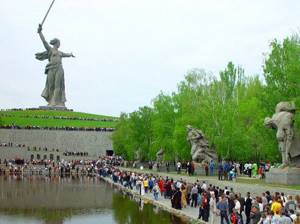
Mamayev Kurgan is the main attraction of Volgograd and the region and the main place of worship for the feat of the defenders of the Fatherland. There were fierce battles here for 200 days and nights. By the will of the people, a monument-ensemble “To the Heroes of the Battle of Stalingrad” was erected on the historical site of the heaviest battles. The head of the team of authors that created the world-famous monument-ensemble was the sculptor E.V. Vuchetich, Hero of Socialist Labor, People's Artist of the USSR, full member of the USSR Academy of Arts, laureate of the USSR State Prize.
The introductory composition “Memory of Generations”, the alley of pyramidal poplars, the square “Standing to the Death”, the Ruin Walls, the Hall of Military Glory and the main monument of the composition, the sculpture “The Motherland Calls!” leave a deep impression on everyone who visits this unique monument-ensemble, which is one of the seven Russian wonders of the world.
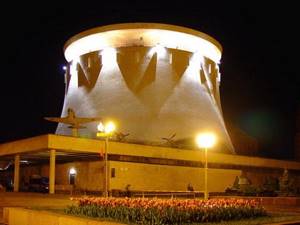
One of the attractions of Volgograd is the Panorama Museum “Battle of Stalingrad”, which was opened in 1985. The center of the museum is the artistic panorama “The defeat of the Nazi troops at Stalingrad.” The panorama creates a generalized image of the fighting city and conveys the courage of its defenders. The exhibition halls of the museum contain about 4 thousand exhibits that reveal the history of the Battle of Stalingrad: documents, awards, weapons, personal belongings of the city’s defenders and famous military leaders. The Battle of Stalingrad Panorama Museum also includes the ruins of an old mill built in 1903.
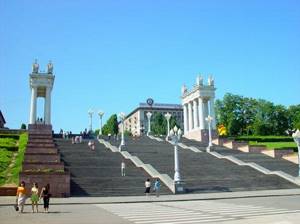
The architectural composition of the Central embankment of the hero city, its picturesque alleys, parks and the presence of monuments to the Battle of Stalingrad make it also one of the main attractions of Volgograd. The embankment is named after the 62nd Army, which defended the northern part of the city during the Battle of Stalingrad.
Sights and monuments associated with the Battle of Stalingrad also include Pavlov's House, Lyudnikov Island, Soldiers' Field, Bald Mountain, etc.
Governor of the Volgograd region
Bocharov Andrey Ivanovich
Phone: 30-70-00
Address: 400098, Volgograd, pr. im. IN AND. Lenina, 9.
Biography
Born on October 14, 1969 in Barnaul, Altai Territory. In 1987 he graduated from the Moscow Suvorov Military School, in 1991 he graduated from the Ryazan Higher Airborne Command School, in 2002 from the Russian Academy of Civil Service under the President of the Russian Federation with a degree in state and municipal administration.
Military service
From 1991 to 2004 he served in command positions in the Russian Airborne Forces. Reserve Colonel. In 1996, by Decree of the President of the Russian Federation, he was awarded the title of Hero of the Russian Federation for personal courage and heroism.
Political activity
From 2005 to 2007 - Deputy Governor of the Bryansk Region, Head of the Permanent Representative Office of the Bryansk Region Administration to the Government of the Russian Federation. In 2007–2012 – Deputy of the State Duma of the Federal Assembly of the Russian Federation of the fifth and sixth convocations. In 2012, he resigned as a deputy in connection with his appointment to a position in the Administration of the President of the Russian Federation. In January 2013, he was elected head of the organizing committee for the founding congress of the All-Russian Popular Front (ONF). From June 2013 to April 2014 – head of the executive committee of the All-Russian Popular Front.
How to get there
- Bus
It's easy to get to the station on time. The schedule has been compiled taking into account the start of registration of the most popular flights. The bus stops 200 meters from the terminal doors.
- bus N 6.
Departs from the railway station. Distance about 20 km. Travel time, depending on how busy the route is, is 35-45 minutes.
The first bus from the railway station leaves at 6:20, from the airport - at 5:45. The last one is at 21:30 and 21:50, respectively. Interval - 15 minutes. Along the way, it picks up passengers at 30 stops. The fare is 20 rubles.
- bus N 9.
The route starts from the stop “School No. 33” from 06:27 and runs until 18:45. Airport – “School No. 33” can be left from 07:12 to 19:30. Interval - 40 minutes.
- Route N 6K. Route: stop “st. Cosmonauts" - airport. Opening hours from 06:15 to 21:00. Interval - 25 minutes. Travel time is 25 minutes.
- Electric train
Aeroexpress departs from the Shpalopropitka railway station. Every day 4 electric trains depart in each direction.
The first train leaves at 06:33, the last at 19:21. Travel time is 25 minutes. Ticket price: 350 rubles.
- Taxi
A taxi ride has a number of advantages:
- instant delivery of the car;
- luxury cars;
- drivers are professionals with extensive work experience;
- free Wi-Fi in every car;
- payment by any means.
The price of the trip depends on the time of day and can range from 400 to 800 rubles. The journey takes 20 minutes.
Don
The Don originates on the southern slope of the Central Russian Upland near the town of Epifani, Tula region. The source of the river is considered to be the springs emerging from the limestones near the village. Urvanki. The Don flows into the Taganrog Bay of the Sea of Azov, forming a delta here. The average annual water flow is 900 m³/sec. The annual flow is 30 km³. The area of the Don basin is 422.5 thousand km², length is 1870 km. The Don flows through the territory of the Volgograd region for 537 km, the basin area is 12.1 thousand km².
Tsimlyansk Reservoir
The Lower Don Valley was blocked by a hydroelectric dam, resulting in the formation of the Tsimlyansk Reservoir. Its water area has an area of 2,700 km², the total volume is 23.9 km³, including useful volume - 11.5 km³. The average width of the reservoir is about 12 km, the largest is 30 km.
The Tsimlyansk Sea has a total length of 260 km and most of it is located within the Volgograd region. With winds up to 20 m/sec, the Tsimlyansk Reservoir can be very stormy. Storms are not uncommon here, and wave heights reach 2.5–3.5 m.
Khoper
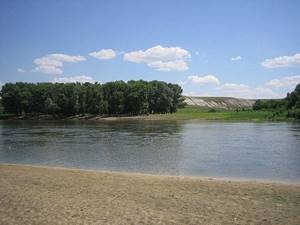
Khoper is a left tributary of the Don. It originates on the southwestern slope of the Volga Upland at an altitude of 200 m in the Penza region. It flows into the Don near the village of Ust-Khopyorskaya. Its length is 979 km; It flows through the territory of the Volgograd region for 325 km, crossing the Uryupinsky, Nekhaevsky, Alekseevsky and Kumylzhensky districts. The total area of the Khopra basin is 61.1 thousand km².
The northernmost river of the region is the Kardail, and the southernmost river of the region is the Kara-Sal, which is part of the basin of the Middle, First and Lower, Second Don.

